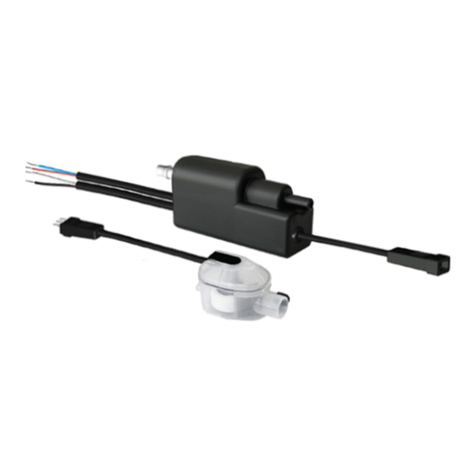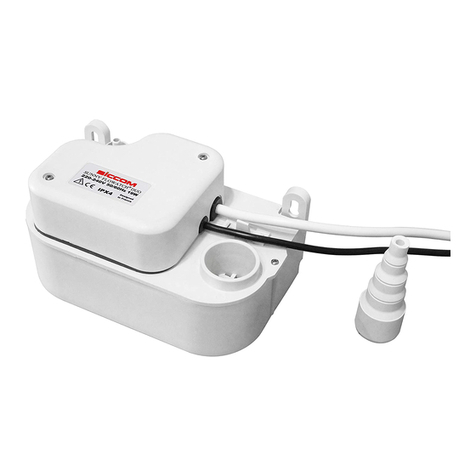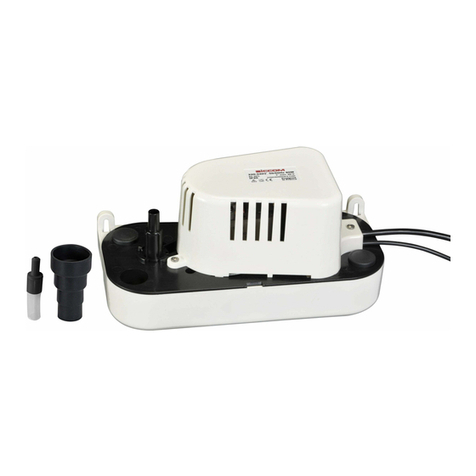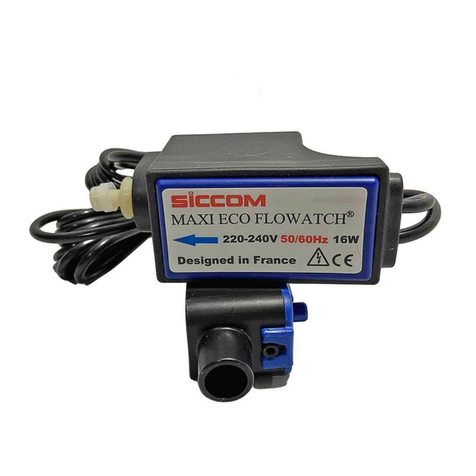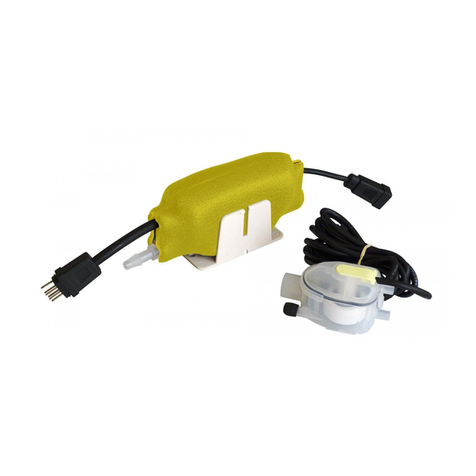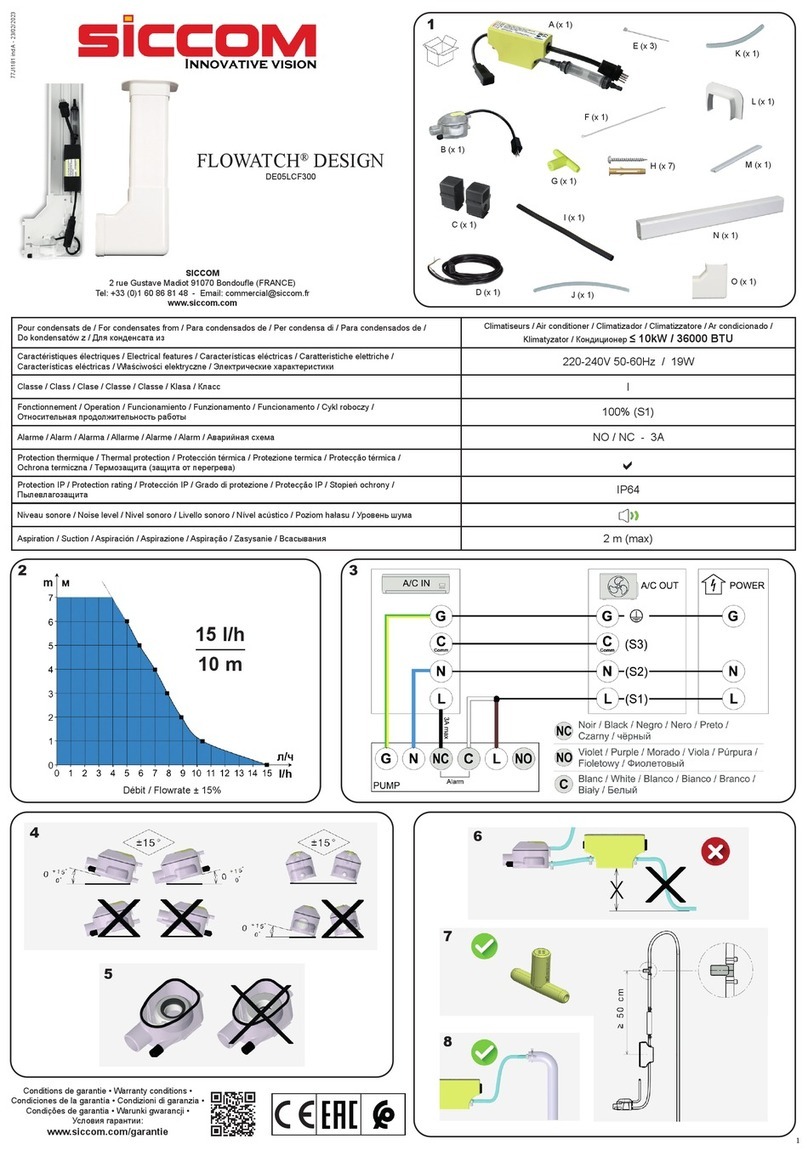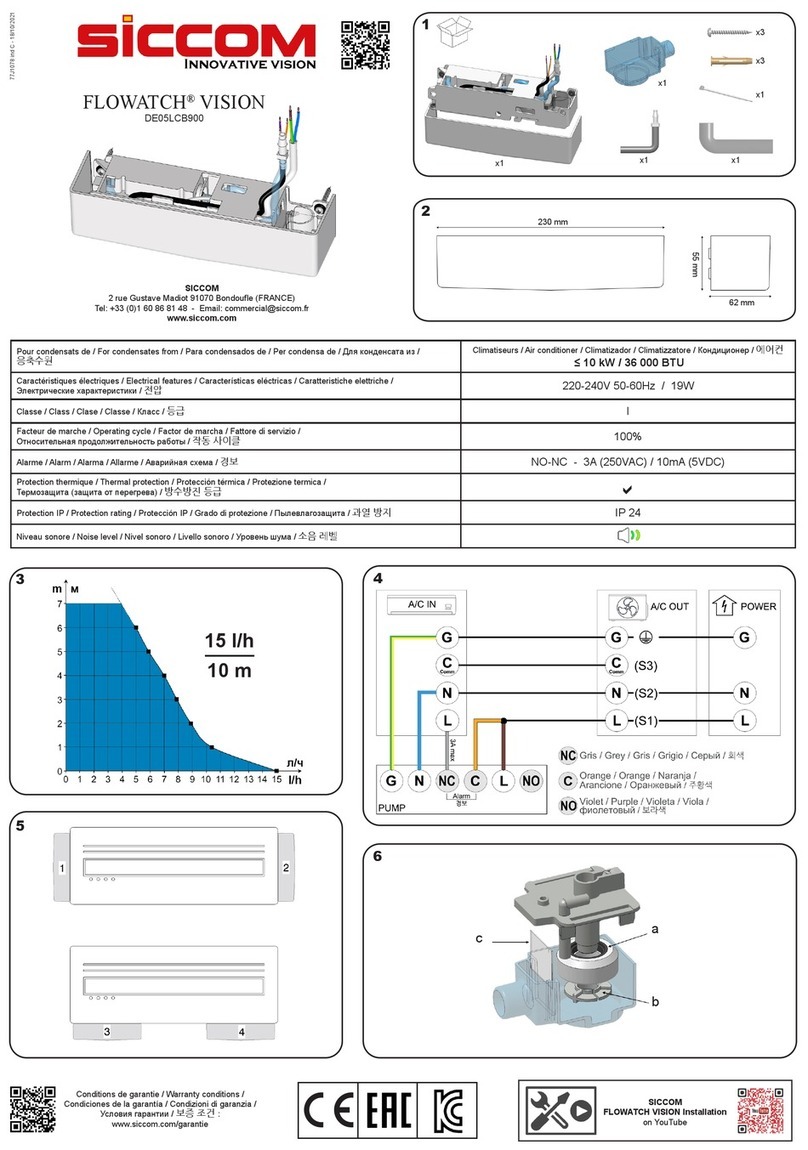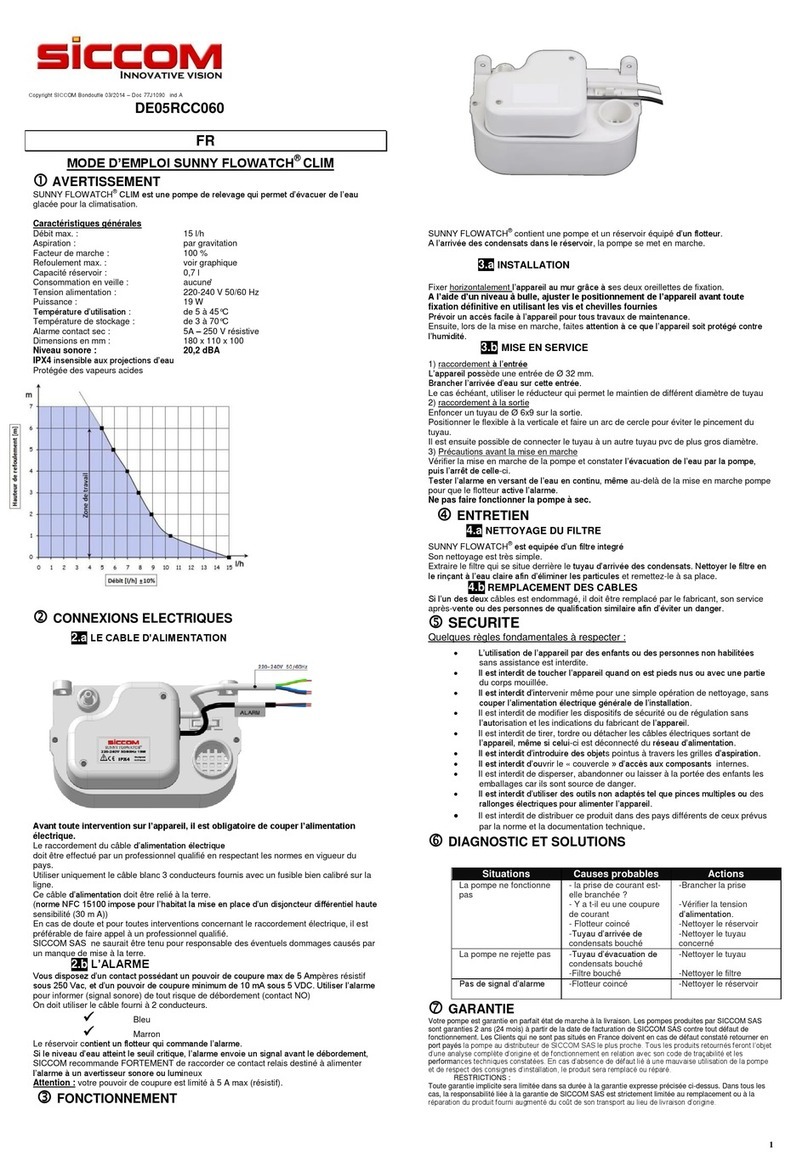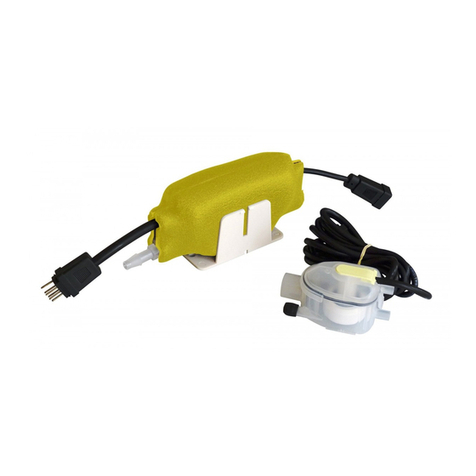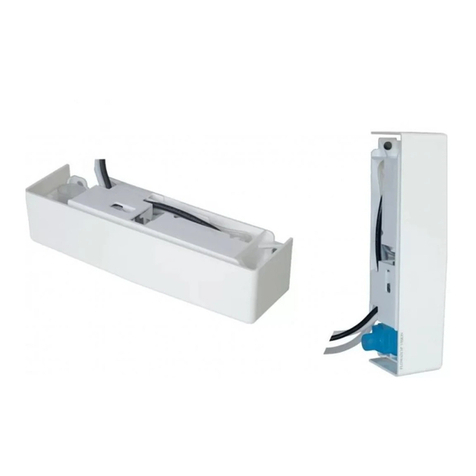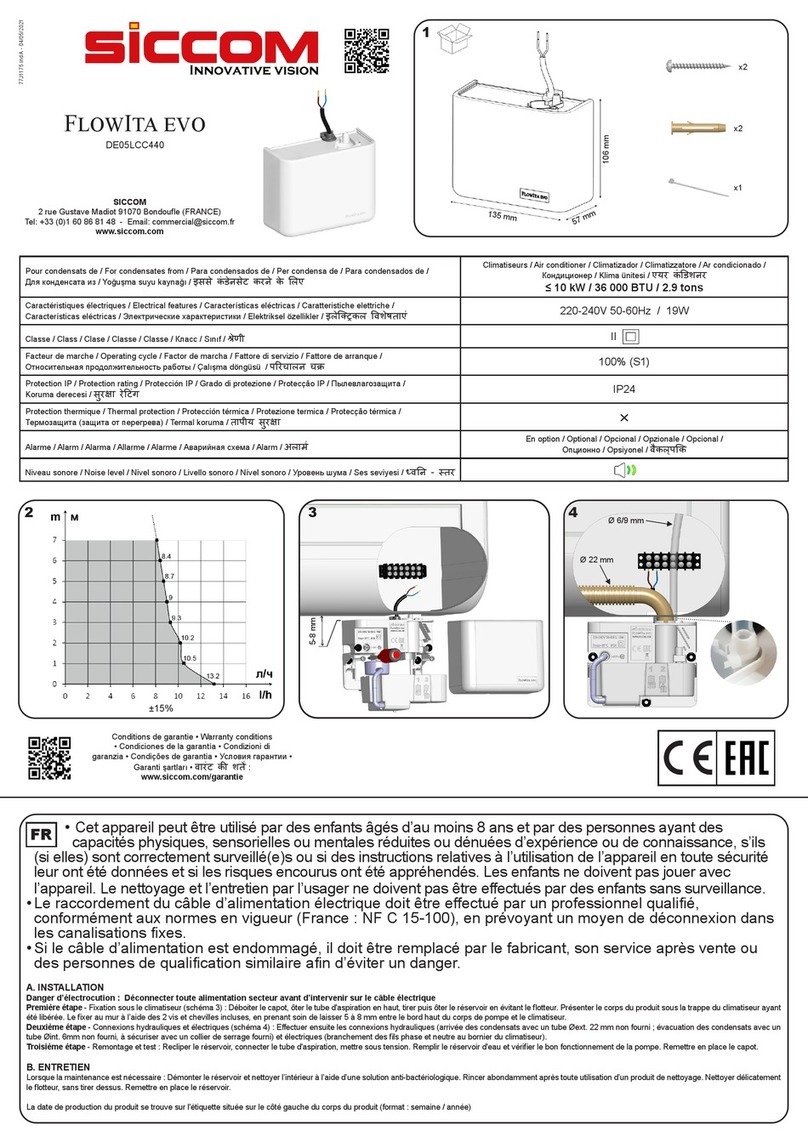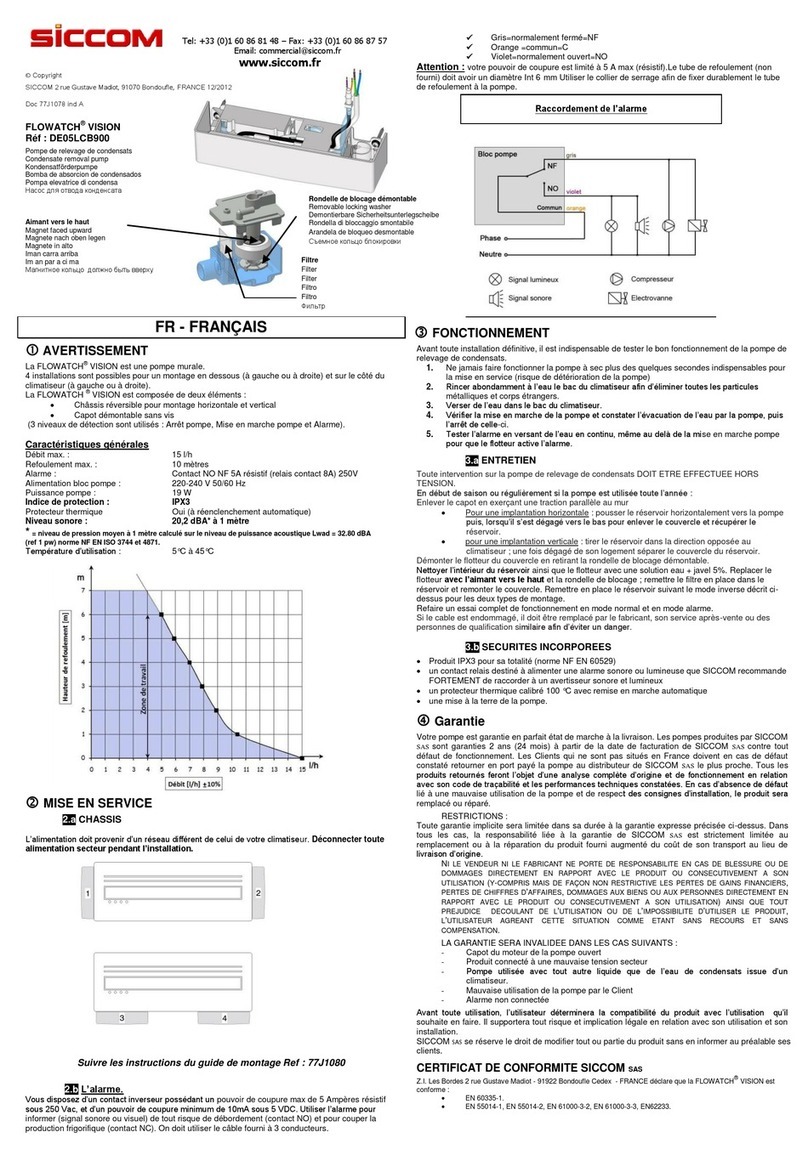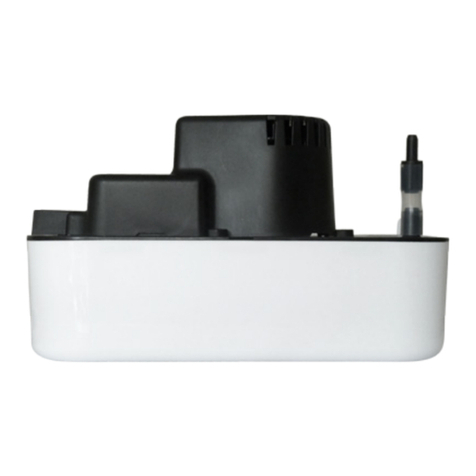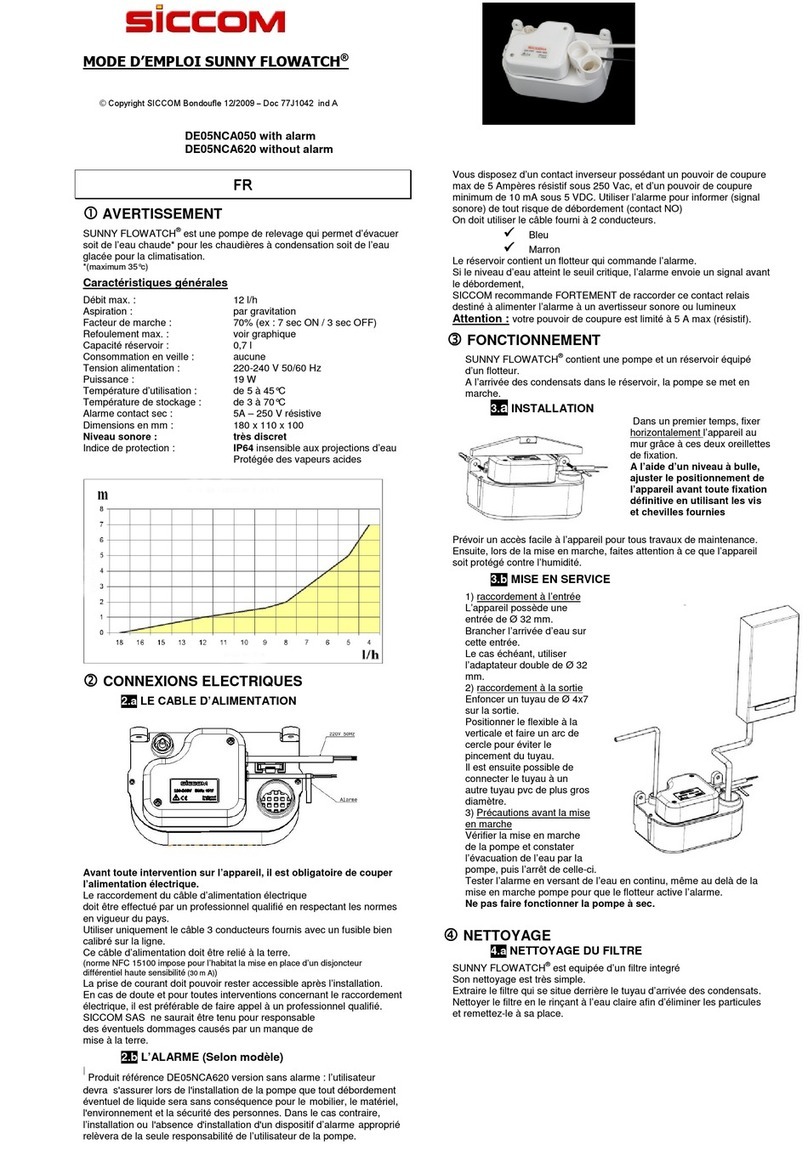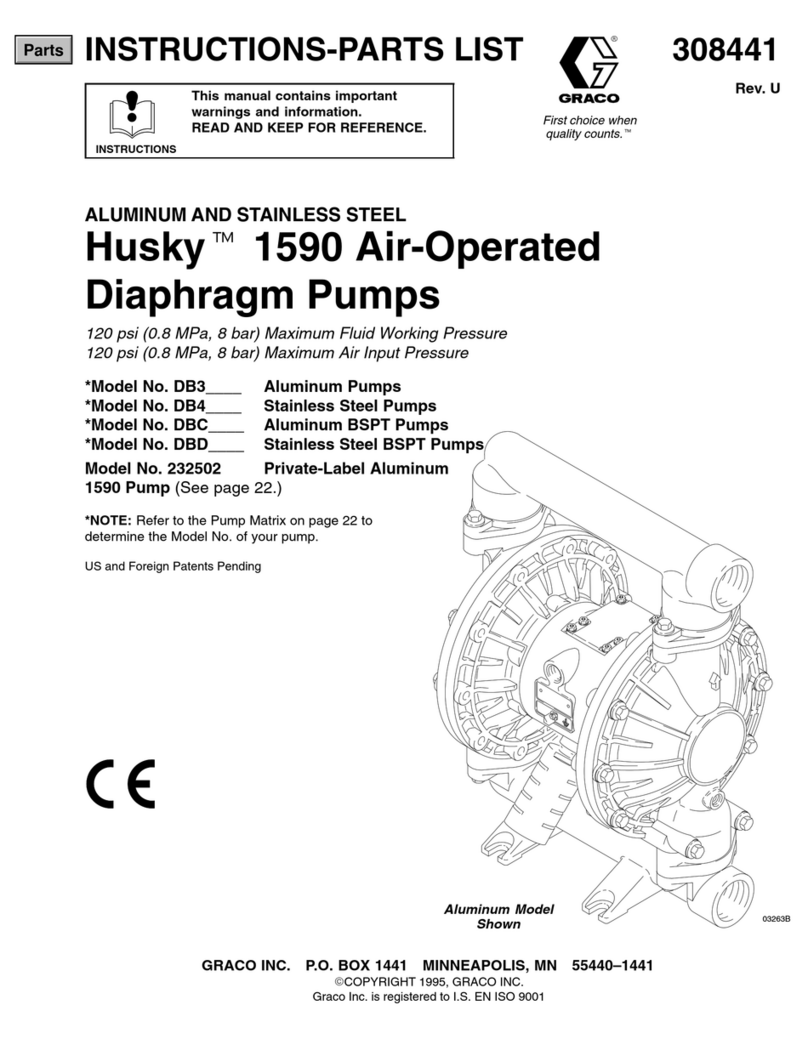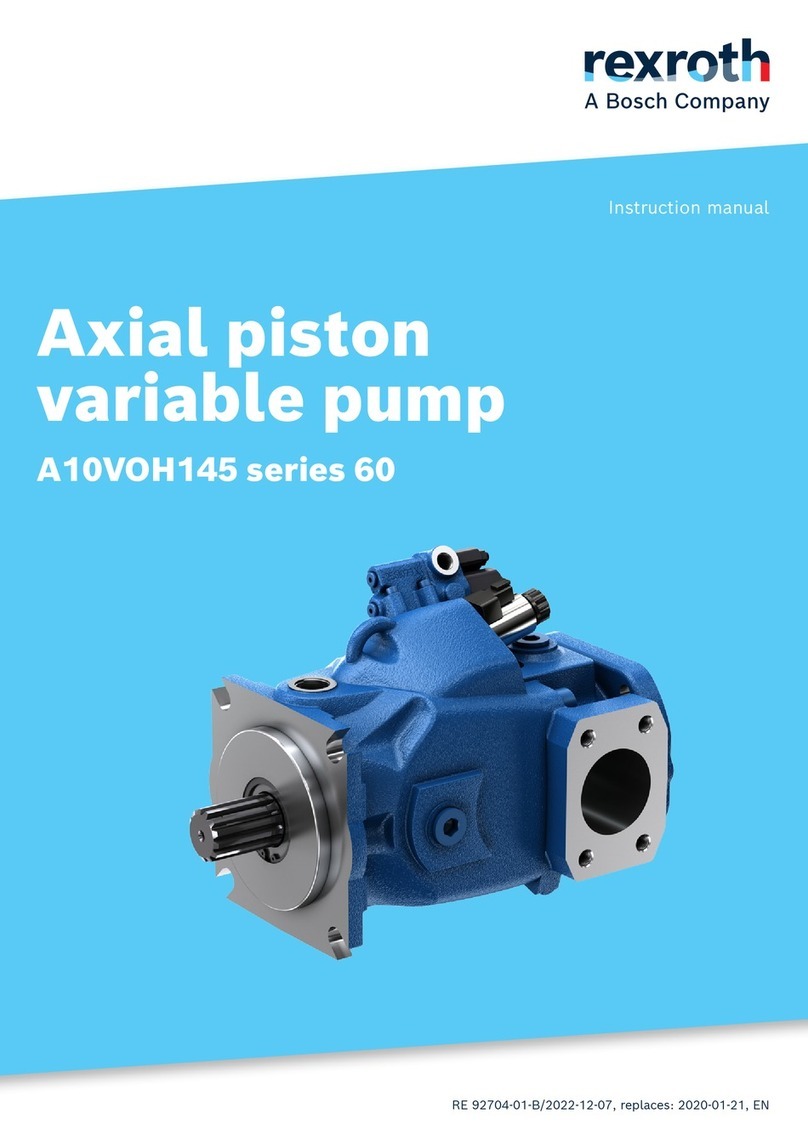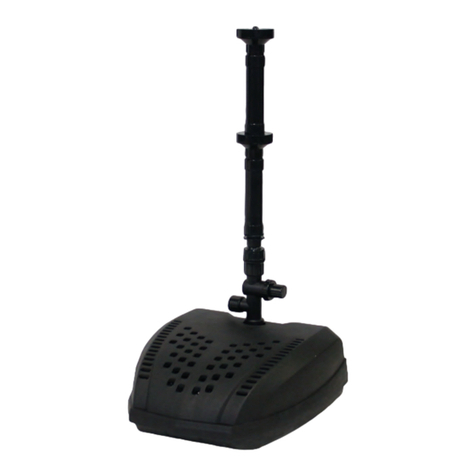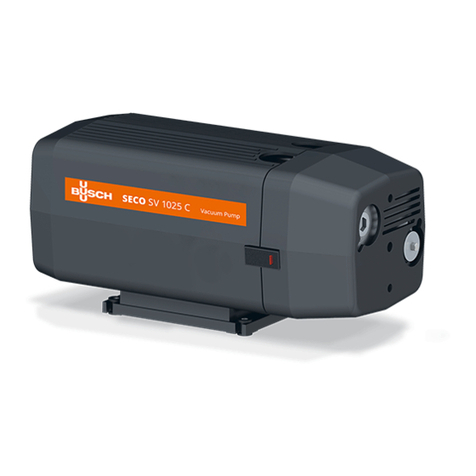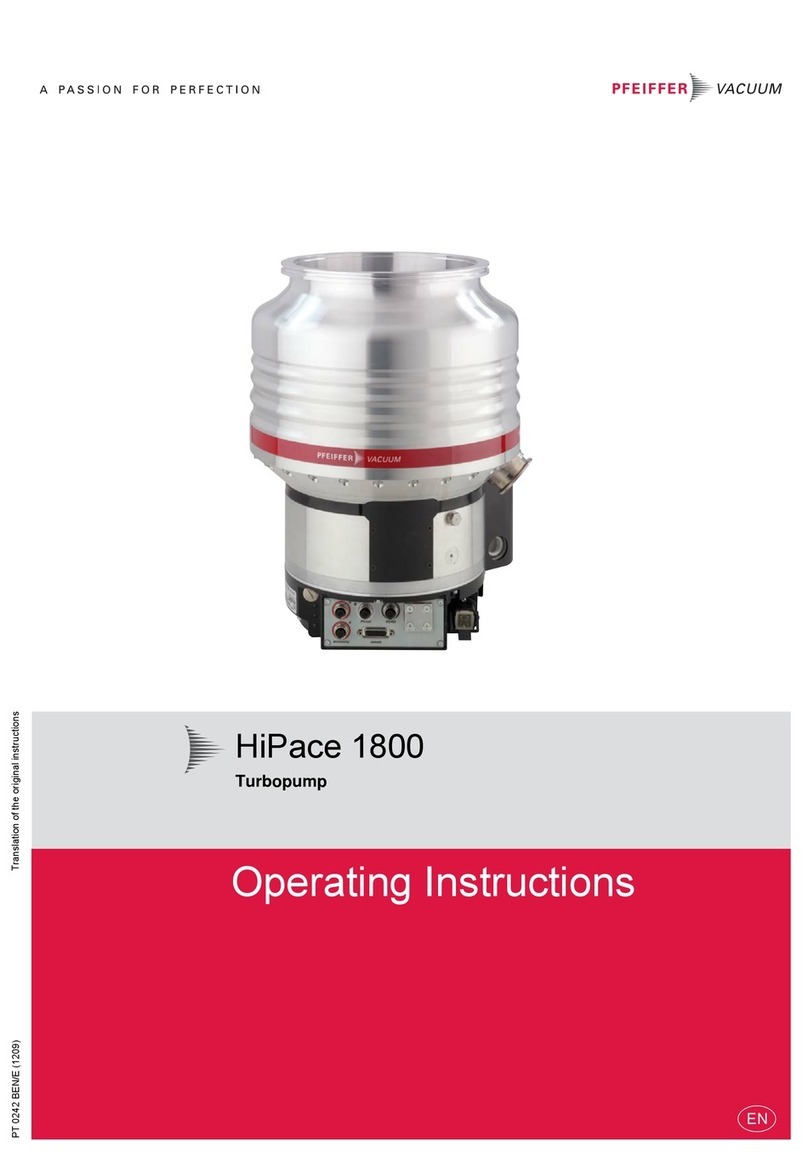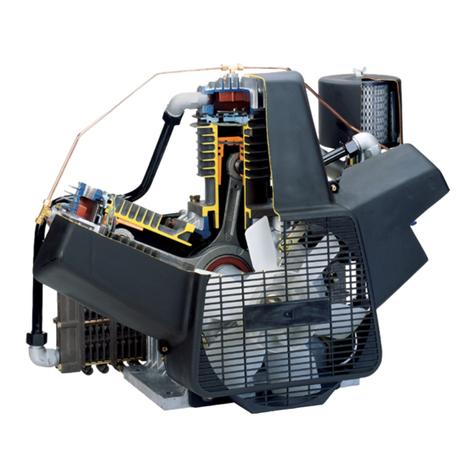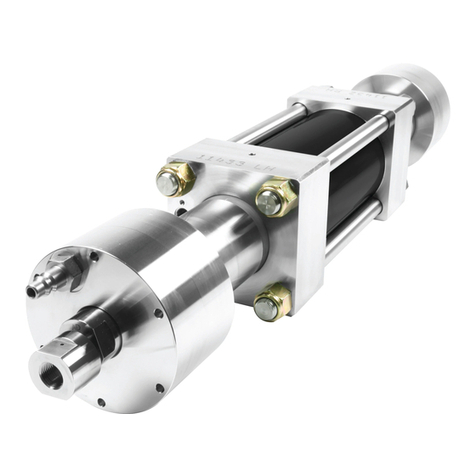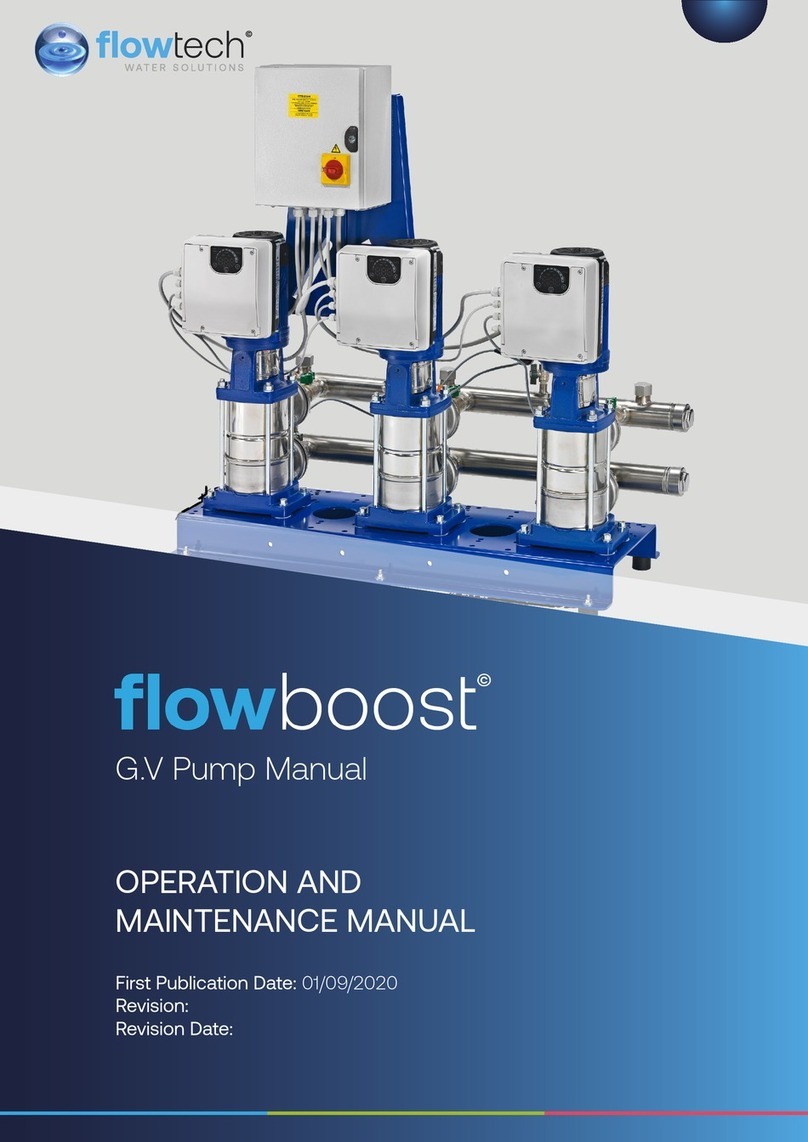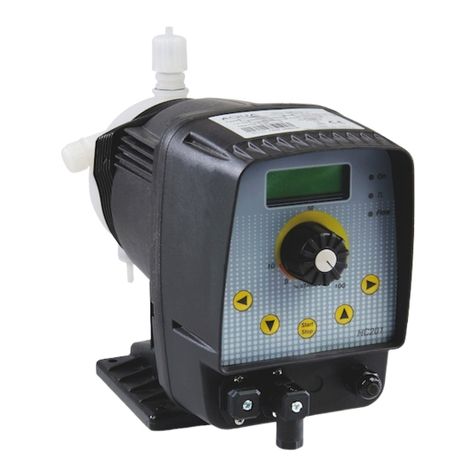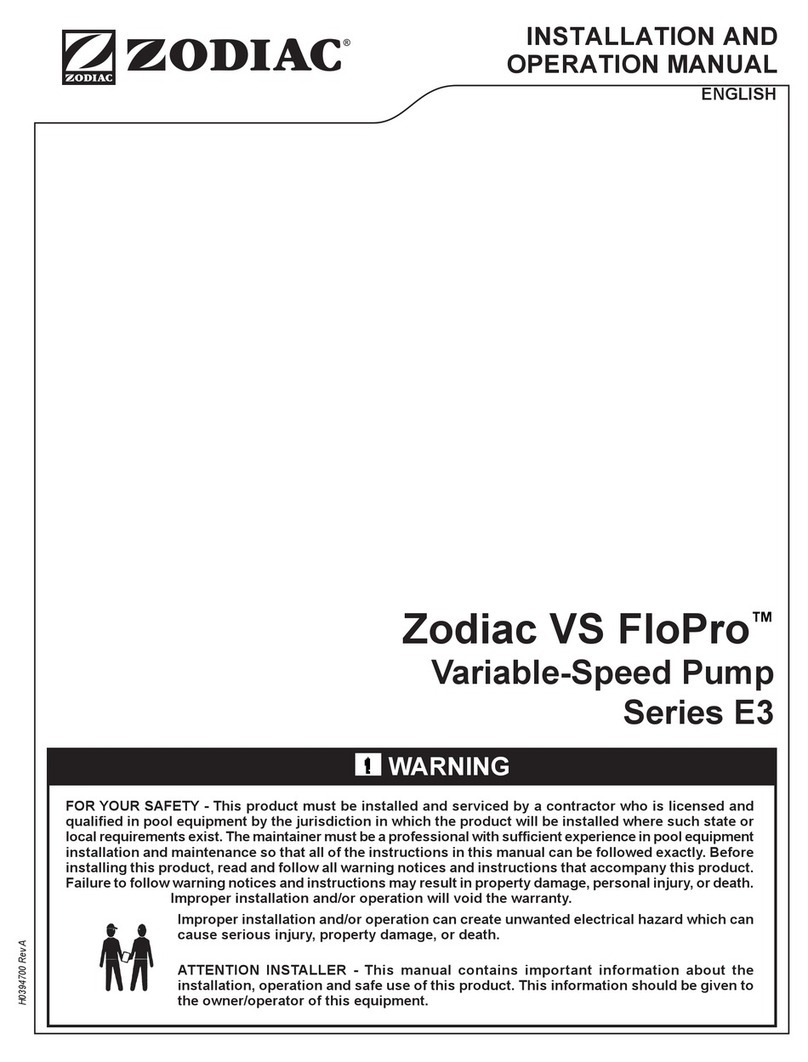
• Questo apparecchio può essere utilizzato da
bambini dagli 8 anni in su e da persone con
capacità siche, sensoriali o mentali ridotte o senza
esperienza o conoscenza, se sono adeguatamente
sorvegliati o se sono state date loro istruzioni su
come utilizzare l'apparecchio in modo sicuro e se i
rischi che ne derivano sono compresi. I bambini non
devono giocare con l'apparecchio. La pulizia e la
manutenzione da parte dell'utente non deve essere
effettuata da bambini senza sorveglianza.
• Il collegamento del cavo di alimentazione deve
essere eseguito da un professionista qualicato, in
conformità alle norme nazionali, fornendo un mezzo
di scollegamento nelle tubazioni sse.
• Se il cavo di alimentazione è danneggiato, deve
essere sostituito dal fabbricante, dal servizio clienti
o da persone con qualica simile per evitare
qualsiasi rischio.
A. COLLEGAMENTO ELETTRICO / ALLARME
1. Alimentazione della pompa
Scollegare tutta l’alimentazione CA durante l’installazione.
2. Collegamento dell’allarme
La pompa ha un contatto di sicurezza normalmente chiuso (NC) per arrestare il condizionatore
d’aria interno in caso di rischio di trabocco di condensa (ricordarsi di controllare le speciche del
condizionatore d’aria). Seguire la gura 4 per il collegamento dell’allarme.
B. INSTALLAZIONE DEL BLOCCO POMPA
Il blocco pompa (A) può essere montato nel condizionatore d’aria, in un condotto o in un controsoftto.
A tale scopo viene fornita una schiuma biadesiva (I). È necessario lasciare uno spazio libero intorno al
blocco pompa (A) per consentire il raffreddamento dell’unità di pompaggio durante il funzionamento per
un lungo periodo di tempo. Il blocco pompa (A) non deve essere coperto (nessun isolamento, schiuma,
ecc.).
Il tubo di scarico (non fornito) deve avere un diametro di 6 x 9 mm per essere ssato all’attacco di
uscita. Utilizzare una fascetta stringitubo (E) per ssare permanentemente il tubo di scarico alla pompa
(A).
Si raccomanda l’installazione del Stop Siphoning (H) per evitare il fenomeno di scarico negativo - vedi
gura 7. Osservare la direzione del usso indicata dalla freccia sul blocco pompa (A).
Se l’uscita del tubo di mandata della pompa si trova ad un livello inferiore rispetto al blocco
pompa, e per evitare un effetto sifonante (scarico negativo), è indispensabile :
- o installare lo Stop Siphoning (H) vedi gura 8.
- oppure collegare l’uscita del tubo di mandata ad un tubo di diametro maggiore - vedi diagramma 9.
C. INSTALLAZIONE DEL BLOCCO DI RILEVAMENTO
L’unità di rilevamento (B) viene fornita con una TENSIONE MOLTO BASSA del blocco pompa (A).
È indispensabile utilizzare il cavo in dotazione. Un manicotto essibile a gomito (F) viene utilizzato per
collegare l’unità di rilevamento (B) al vassoio del condizionatore d’aria. L’aspirazione avviene tramite il
tubo essibile da 1,8 metri (G) con un diametro interno di 5 mm. Utilizzare le 2 fascette stringitubo (E)
per ssare permanentemente questo tubo essibile all’unità sensore (B) e alla pompa (A). Collegare il
tubo di sato (D), diametro interno 4 mm, lunghezza 150 mm.
Per la mini FLOWATCH® 3 WiFi, il blocco del rivelatore (B) deve essere posizionato e ssato in
posizione orizzontale - vedi gura 5 - mediante la guida di ssaggio (C).
Selezionare la direzione di scarico più adatta all’applicazione e tappare la presa di scarico inutilizzata
con la spina nera.
D. IMPOSTAZIONE WIFI
Per usufruire delle funzioni connesse della mini FLOWATCH® 3 WiFi (creazione di una rete di pompe,
invio di e-mail in caso di allarme...), consultare la Guida all’installazione.
E. FUNZIONAMENTO E MANUTENZIONE
1. TEST FUNZIONALE (consigliato)
Attenzione: non far mai funzionare la pompa a secco per più dei pochi secondi necessari alla messa in
funzione (rischio di danni alla pompa).
• Versare acqua nella vaschetta del condizionatore d’aria senza eccessi (NB il tubo di sato deve
rimanere asciutto).
• Controllare che la pompa sia accesa e che l’acqua venga scaricata dalla pompa e poi spenta.
• Testare l’allarme versando acqua in modo continuo, anche dopo l’avvio della pompa, in modo che il
galleggiante attivi l’allarme (galleggiante di alto livello).
2. MANUTENZIONE
Qualsiasi intervento sulla pompa di condensa deve essere eseguito a motore spento.
Quando è necessaria la manutenzione: Rimuovere il coperchio del blocco di rilevamento, del ltro
e del galleggiante. Pulire l’interno del serbatoio e il galleggiante con una soluzione al 5% di acqua
+ candeggina. Sciacquare accuratamente dopo l’uso di qualsiasi prodotto per la pulizia. Assicurarsi
che la guarnizione del coperchio sia nella sua sede. Assicurarsi che il galleggiante sia posizionato
correttamente (magnete verso l’alto) - vedi diagramma 6.
IT
• Este aparato puede ser utilizado por niños de
8 años o más y por personas con capacidades
físicas, sensoriales o mentales reducidas o sin
experiencia o conocimientos, si se les supervisa
adecuadamente o si se les han dado instrucciones
sobre cómo utilizar el aparato de forma segura y
si se comprenden los riesgos que conlleva. Los
niños no deben jugar con el aparato. La limpieza y
el mantenimiento por parte del usuario no debe ser
llevada a cabo por niños sin supervisión.
• La conexión del cable de alimentación debe ser
realizada por un profesional cualicado, de acuerdo
con las normas vigentes, proporcionando un medio
de desconexión en las tuberías jas.
• Si el cable de alimentación está dañado, debe
reemplazarlo el fabricante, su servicio posventa
o personas de similar cualicación para evitar
cualquier peligro.
A. CONEXIÓN ELÉCTRICA / ALARMA
1. El suministro de energía de la bomba
Desconectar de toda alimentación eléctrica durante la instalación.
2. Conectando la alarma
La bomba tiene un contacto de seguridad normalmente cerrado (NC) para detener la unidad de aire
acondicionado interior en caso de riesgo de desbordamiento de condensado (recuerde comprobar las
especicaciones del aire acondicionado). Siga la gura 5 para conectar la alarma.
B. INSTALACIÓN DE LA UNIDAD DE BOMBA
La unidad de bomba (A) puede ser montada en el aire acondicionado, en un conducto o en un falso
techo. Se proporciona una espuma adhesiva de doble cara (I) para este propósito. Hay que dejar un
espacio libre alrededor de la unidad de bomba (A) para permitir que se enfríe cuando esté funcionando
durante mucho tiempo. La unidad de bomba (A) no debe ser cubierta (aislamiento, espuma, etc.).
El tubo de descarga (no suministrado) debe tener un diámetro de 6 x 9 mm para ser jado a la
conexión de salida. Utilice una abrazadera de manguera (E) para jar permanentemente el tubo de
descarga a la bomba (A).
Se recomienda la instalación del Stop Siphoning (H) para evitar el fenómeno de descarga negativa -
ver gura 7. Observe la dirección del ujo indicada por la echa en la unidad de bomba (A).
Si la salida del tubo de descarga de la bomba está a un nivel más bajo que la unidad de bomba
(A), y para evitar un efecto sifón (descarga negativa), es imperativo :
- o bien instalar el Stop Siphoning (H) ver gura 8.
- o conectar la salida del tubo de entrega a un tubo de mayor diámetro - ver diagrama 9.
C. INSTALACIÓN DEL BLOQUE DE DETECCIÓN
La unidad de detección (B) es suministrada con MUY BAJA TENSIÓN por la unidad de bomba (A). Es
imperativo usar el cable suministrado. Un manguito exible para el codo (F) se utiliza para conectar la
unidad de detección (B) a la bandeja del aire acondicionado. La succión se realiza a través del tubo
exible de 1,8 metros (G) con un diámetro interno de 5 mm. Utilice las 2 abrazaderas de manguera (E)
para jar permanentemente este tubo exible a la unidad de detección (B) y a la bomba (A). Conecta el
tubo de ventilación (D), diámetro interior 4 mm, longitud 150 mm.
En el caso del mini FLOWATCH® 3 WiFi, el bloque de detección (B) debe colocarse y jarse en
posición horizontal - véase la gura 5 - mediante el carril de jación (C).
Seleccione la dirección de descarga más adecuada para la aplicación y enchufe la salida de descarga
no utilizada con el tapón negro.
D. CONFIGURACIÓN DEL WIFI
Para aprovechar las funciones conectadas del mini FLOWATCH® 3 WiFi (creación de una red de
bombas, envío de correo electrónico en caso de alarma...), consulte la Guía de instalación.
E. OPERACIÓN Y MANTENIMIENTO
1. PRUEBA DE FUNCIONAMIENTO (recomendado)
Precaución: Nunca haga funcionar la bomba en seco durante más de los pocos segundos necesarios
para la puesta en marcha (riesgo de daños en la bomba).
• Vierta agua en la bandeja del aire acondicionado sin exceso (NB el tubo de ventilación debe
permanecer seco).
• Comprueba que la bomba está encendida y que el agua se drena de la bomba y luego se apaga.
• Pruebe la alarma vertiendo agua continuamente, incluso después de que la bomba haya arrancado,
para que el otador active la alarma (otador de alto nivel).
2. MANTENIMIENTO
Cualquier trabajo en la bomba de condensado debe realizarse con la energía apagada.
Cuando sea necesario el mantenimiento: Quitar la tapa del bloque de detección, el ltro y el otador.
Limpia el interior del tanque y el otador con una solución de agua + lejía al 5%. Enjuague bien
después de usar cualquier producto de limpieza. Asegúrate de que la junta de la tapa esté en su
alojamiento. Asegúrate de que el otador está correctamente posicionado (imán hacia arriba) - ver
diagrama 6.
ES




